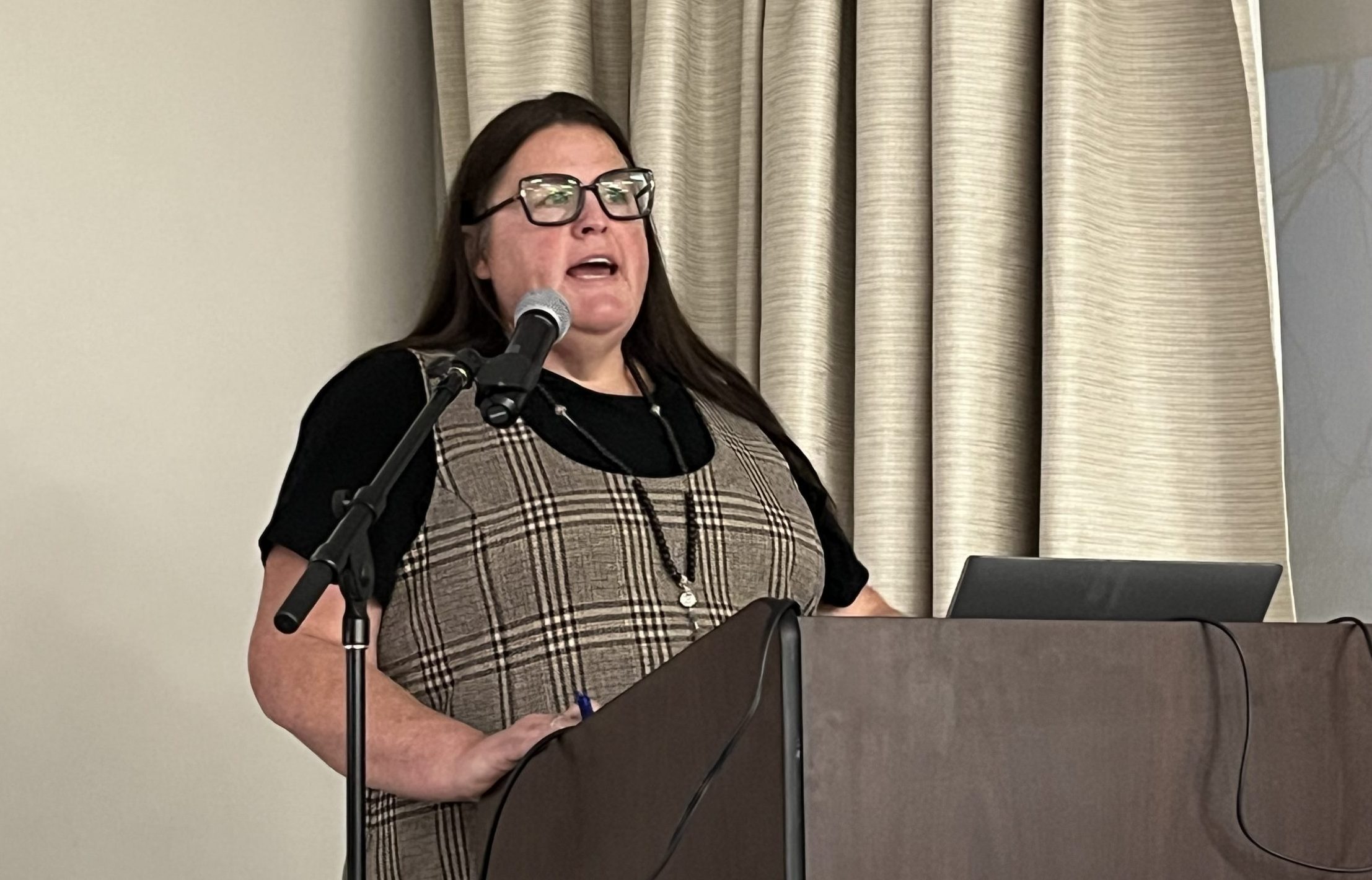ABOYNE – Take a deep breath. Everybody feels it. You can do this.
The words of encouragement were called out from a group of women who gathered in Aboyne Hall on the evening of March 4 to hear about local struggles with finding licensed childcare spaces in the county, and how the system works.
At the front of the room of roughly 30 women, a mother of two stood, tears running down her cheeks to quivering lips, as she tried to summon words between sobs.
“I just want to share how real this crisis is,” she said.
She had done everything right: as soon as she knew she was pregnant, she joined every childcare waiting list in the area. But it was of no use. Two years came and went between her first and second child. The lists seemed to remain static.
“I made a lot of concessions to adequate care,” the woman said.
“This whole thing makes me want to move away, which is really sad when we’re trying to grow a community.”
As part of Ontario’s agreement with the feds for the Canada-Wide Early Learning and Child Care (CWELCC) program – a promise to bring childcare costs to an average of $10 per day by 2025 – the province committed to opening 86,000 new licensed childcare spaces.
The county’s cut of that is 1,608 spaces (all licensed and within the community, as opposed to school-based spaces) and participating in the CWELCC program.
There are currently 610 full-day, centre-based spaces in the county for infants, toddlers and preschool-aged children; 322 kindergarten, centre-based spaces; and 47 licensed home-based spaced for infants through to kindergarten.
Despite those spaces, and lofty government promises of reduced costs for parents, the reality is the county is struggling to respond to demand and many don’t have access.
Just 15 per cent of children aged zero to six in the county have access to licensed CWELCC-subsidized spaces; Erin and Guelph/Eramosa are nearest the provincial target of 37%.
Even if the province’s target is hit, it won’t go far enough to provide parents options, Coalition for Better Childcare Ontario chair Christa O’Connor said, calling the target “terrible.”
County early years director Mandy Koroniak agreed, saying the province’s target “almost certainly [is] not enough.”
The county projects an additional 250 spaces opening in Guelph and Wellington North in the near future, but the county doesn’t have an accurate idea of what true local demand is.
Lengthy waitlists are currently siloed at each provider, however providers in the county are moving to a centralized list this spring.
“It shouldn’t be this hard,” county councillor Diane Ballantyne told the room.
Short of a transformational solution, Ballantyne wanted to give the tired, worried parents emailing her angrily about the lack of access somewhere to channel their frustration and energy.
Last fall, she met with county social services administrator Luisa Artuso to get a grasp on the situation and to suggest the public meeting for local parents.
“I’ve received more concerns from residents connected to the lack of childcare in this community than any other issue,” Ballantyne said.
“We’re all aware there is insufficient licensed childcare in this community.”
Although not enough to respond to need, Koroniak presented data illustrating an increase in the number of licensed childcare spaces available in the county between 2015 and 2023.
The number of infant, toddler, and preschool spaces increased in the seven-year period to 610 from 323 spaces.
Likewise, kindergarten and school age spaces increased, to 742 spaces in 2023 from 267 in 2015.
“This has been a fantastic support,” Koroniak said of the CWELCC program, which provides federal tax dollars distributed by the county to eligible and participating area childcare providers.
Under the program, parents are supposed to pay less, with federal tax dollars subsidizing the childcare provider.
According to Koroniak, parents are now paying half of what they did in 2019.
Fees have been reduced by 52.75 per cent (not less than $12 per day) from March to December 2023. No further fee reduction is anticipated this year.
The county’s role is limited to service delivery, administration and planning, and largely follows direction from on high.
In the bureaucratic hierarchy, the county is like a middle manager, with the province at the top calling the shots.
In Drayton, for example, there is not a single licensed childcare spot in the community, which also happens to have the largest proportion of children aged zero to four in the county.
“Drayton has been on file for 20 years,” Artuso told the gathering.
The province has yet to approve money for building CWELCC-eligble, school-based spaces there.
In opening new spaces, the county must also balance a provincially-mandated ratio of for-profit to non-profit childcare providers, and determine CWELCC eligibility for new spaces based on where they are most needed.
To open an additional 1,608 licensed and subsidized spaces requires cash from upper-level governments for buildings (such as in Drayton), or for more licensed home-care providers to start up, especially in the county’s north, where centre-based care is less ideal.
“Until there is sufficient licensed childcare in our community, you’re going to continue to see unregulated childcare,” Artuso said.
The county has the ear of the province through advisory bodies where staff advocate for more funding, but Artuso said that’s the limit of what staff can do.
“Childcare is political,” O’Connor told the room.
“I think that makes some of us uncomfortable.”
Parents have a voice more powerful than they realize, she said, suggesting they contact local MPPs and make affordable childcare an election issue.
“Parents deserve better; children deserve better,” she said.
*Correction: This story has been corrected from an earlier version that misstated a reduction in childcare fees. There has been a reduction in fees by 52.75 per cent, not $52.75.




